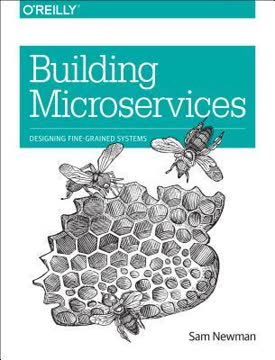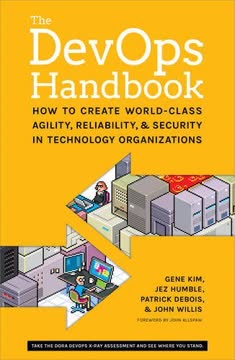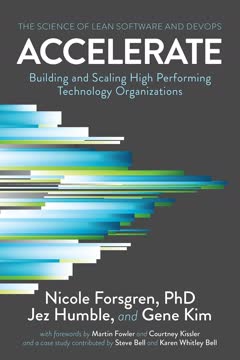Key Takeaways
1. Conway's law shapes software architecture through team structures
If the architecture of the system and the architecture of the organization are at odds, the architecture of the organization wins.
Communication structures matter. Conway's law reveals that an organization's communication structure directly influences the design of the systems it creates. This principle has profound implications for software architecture and team organization. By aligning team structures with desired system architectures, organizations can leverage Conway's law to their advantage.
Reverse Conway maneuver. Instead of letting team structures dictate system design, organizations can intentionally shape their teams to produce the desired architecture. This approach, known as the "reverse Conway maneuver," involves:
- Identifying the target system architecture
- Designing team structures that mirror this architecture
- Allowing the natural forces of Conway's law to guide development
Strategic team design. By consciously designing team structures, organizations can:
- Encourage modular, loosely-coupled systems
- Promote clear interfaces between components
- Enhance system maintainability and scalability
2. Team-first approach optimizes for cognitive load and flow
Reducing cognitive load for teams and facilitating team interactions helps to optimize flow.
Cognitive load matters. The team-first approach recognizes that there's a limit to the complexity a team can effectively manage. By prioritizing team cognitive capacity, organizations can:
- Enhance productivity and innovation
- Reduce stress and burnout
- Improve code quality and system reliability
Strategies for managing cognitive load:
- Limit team responsibilities to match their cognitive capacity
- Break down large systems into team-sized components
- Provide clear, well-defined interfaces between teams
- Invest in tools and platforms that simplify complex tasks
Optimizing for flow. By reducing unnecessary cognitive burdens, teams can achieve a state of flow, characterized by:
- High productivity and creativity
- Increased job satisfaction
- Faster problem-solving and innovation
3. Four fundamental team topologies drive effective software delivery
The four fundamental Team Topologies are: stream-aligned, enabling, complicated subsystem, and platform.
Stream-aligned teams form the backbone of the organization, delivering value directly to users or customers. They are:
- Cross-functional
- Aligned to a specific product, service, or user journey
- Empowered to deliver end-to-end value
Enabling teams support and accelerate stream-aligned teams by:
- Providing specialized expertise
- Conducting research and prototyping
- Facilitating knowledge transfer
Complicated-subsystem teams manage complex components that require deep expertise, allowing stream-aligned teams to focus on delivering value.
Platform teams provide internal services and tools that empower stream-aligned teams to work more efficiently and autonomously.
By adopting these four team types, organizations can:
- Clarify team responsibilities and interactions
- Reduce dependencies and bottlenecks
- Enhance overall delivery speed and quality
4. Well-defined team interaction modes enhance collaboration and productivity
Limiting team interaction to three modes—collaboration, X-as-a-Service, and facilitating—simplifies and clarifies essential interactions between teams building software systems.
Collaboration mode involves close teamwork for discovery and innovation. It's best used:
- During early phases of new system development
- For solving complex, cross-cutting problems
- When rapid learning and adaptation are crucial
X-as-a-Service mode establishes clear provider-consumer relationships between teams. It's ideal for:
- Stable, well-defined services or components
- Maximizing team autonomy
- Enabling predictable, scalable interactions
Facilitating mode involves one team helping another to develop new capabilities. It's useful for:
- Knowledge transfer and skill development
- Temporary support during transitions
- Addressing cross-team challenges
By explicitly defining these interaction modes, organizations can:
- Reduce ambiguity in team relationships
- Enhance focus and productivity
- Facilitate smoother cross-team collaborations
5. Align software boundaries with team cognitive capacities
Choose software boundaries to match team cognitive load.
Team-sized architecture. Aligning software boundaries with team cognitive capacities ensures that teams can effectively own and evolve their parts of the system. This approach leads to:
- Increased ownership and accountability
- Faster development and problem-solving
- Improved system maintainability
Strategies for defining boundaries:
- Use domain-driven design to identify natural system boundaries
- Consider team size and expertise when defining component scope
- Leverage microservices architecture to create manageable, team-sized services
Benefits of proper boundary alignment:
- Reduced cognitive overload for teams
- Clearer responsibilities and interfaces between teams
- Enhanced ability to evolve and scale the system over time
6. Platforms should be "just big enough" to support stream-aligned teams
A good platform provides standards, templates, APIs, and well-proven best practices for Dev teams to use to innovate rapidly and effectively.
Thinnest viable platform (TVP). The ideal platform provides just enough support to accelerate stream-aligned teams without becoming overly complex or restrictive. Characteristics of a good TVP include:
- Clear, well-documented APIs
- Self-service capabilities
- Abstraction of common, complex tasks
Platform evolution. As the organization grows and technologies change, the platform should evolve to:
- Address emerging needs of stream-aligned teams
- Incorporate new technologies and best practices
- Simplify or remove underutilized features
Benefits of a well-designed platform:
- Reduced cognitive load for stream-aligned teams
- Faster time-to-market for new features and products
- Improved consistency and reliability across systems
7. Evolve team structures continually to adapt to changing needs
Different topologies and different team interactions for different parts of an organization need to evolve at different times based on what they are doing and what they are trying to achieve.
Organizational sensing. Continuously monitor and assess team effectiveness and interactions to identify opportunities for improvement. Key indicators include:
- Delivery speed and quality
- Team satisfaction and engagement
- Cross-team collaboration effectiveness
Adaptive team structures. Be prepared to adjust team topologies and interaction modes as needs change. This might involve:
- Splitting or merging teams
- Shifting between collaboration and X-as-a-Service modes
- Creating or disbanding enabling teams
Benefits of continuous evolution:
- Improved responsiveness to market and technology changes
- Enhanced team effectiveness and satisfaction
- Optimized organizational structure for current goals and challenges
8. Treat operations as high-fidelity sensory input for development
Treating Ops as an input to Dev requires a radical rethinking of the roles of these often-separate groups.
DevOps integration. Blurring the lines between development and operations creates a feedback loop that enhances overall system quality and reliability. This approach involves:
- Shared responsibility for system performance
- Continuous feedback from production to development
- Collaborative problem-solving across traditional boundaries
Benefits of ops-as-input:
- Faster identification and resolution of issues
- Improved system reliability and performance
- Enhanced empathy between development and operations teams
Strategies for implementation:
- Implement robust monitoring and alerting systems
- Establish cross-functional teams with both dev and ops expertise
- Create processes for rapid feedback and iteration based on operational insights
9. Design for team-sized software architecture to enhance ownership
A team working with software systems that require too high of a cognitive load cannot effectively own or safely evolve the software.
Team-sized components. Break down large systems into manageable, team-sized components that align with team cognitive capacities. This approach:
- Enhances team ownership and accountability
- Facilitates faster development and problem-solving
- Improves overall system maintainability
Strategies for implementation:
- Use domain-driven design to identify natural system boundaries
- Leverage microservices architecture to create manageable services
- Align team responsibilities with well-defined system components
Benefits of team-sized architecture:
- Reduced cognitive overload for teams
- Clearer responsibilities and interfaces between teams
- Enhanced ability to evolve and scale the system over time
- Improved team satisfaction and engagement
Last updated:
FAQ
What's Team Topologies about?
- Focus on Team Structures: Team Topologies by Matthew Skelton and Manuel Pais explores how to organize business and technology teams to enhance software delivery and operational efficiency.
- Framework for Team Design: It introduces a framework that emphasizes team interactions and structures, aligning them with business goals and customer needs.
- Adaptability and Flow: The book advocates for a dynamic approach to team organization, allowing teams to adapt to changing contexts and maintain a steady flow of work.
Why should I read Team Topologies?
- Improve Team Performance: The book provides insights into optimizing team structures, leading to higher performance and better alignment with business objectives.
- Real-World Case Studies: It includes numerous case studies and examples from various organizations, illustrating the practical application of the concepts discussed.
- Guidance for Modern Challenges: As organizations face increasing complexity in software delivery, this book offers strategies to navigate these challenges effectively.
What are the key takeaways of Team Topologies?
- Four Fundamental Team Types: The book identifies four essential team types: Stream-Aligned, Enabling, Complicated-Subsystem, and Platform teams, each serving a specific purpose.
- Conway’s Law Importance: It emphasizes the significance of Conway’s Law, which links organizational communication structures to system design.
- Cognitive Load Management: The authors stress managing cognitive load on teams to ensure effective operation and high performance.
What are the four fundamental team types described in Team Topologies?
- Stream-Aligned Teams: Focused on delivering value aligned with a specific business stream, operating independently and responding quickly to changes.
- Enabling Teams: Help stream-aligned teams acquire new capabilities and improve practices, acting as a support system without becoming a bottleneck.
- Complicated-Subsystem Teams: Handle complex areas of the system requiring specialized knowledge, allowing stream-aligned teams to focus on core responsibilities.
- Platform Teams: Provide internal services that reduce cognitive load on stream-aligned teams, enabling efficient software delivery.
How does Team Topologies define Conway’s Law?
- Communication Structures Influence Design: Conway’s Law states that system design is constrained by the communication structures of the organization that creates it.
- Strategic Implications: Understanding this law is crucial for effective team design, helping organizations avoid pitfalls in software development.
- Reverse Conway Maneuver: The authors introduce structuring teams to align with the desired software architecture rather than the other way around.
What is the significance of cognitive load in Team Topologies?
- Cognitive Load Management: The book stresses managing cognitive load to ensure teams can handle responsibilities without being overwhelmed.
- Team Size and Responsibilities: Suggests limiting team sizes and responsibilities to match cognitive load capacity, maintaining high performance and morale.
- Impact on Software Delivery: Managing cognitive load improves work flow and reduces bottlenecks, leading to faster and more reliable outcomes.
How do the interaction modes work in Team Topologies?
- Collaboration Mode: Involves two teams working closely to achieve a shared goal, allowing rapid learning and innovation but increasing cognitive load.
- X-as-a-Service Mode: One team provides a service to another with minimal collaboration, characterized by clear ownership and responsibilities.
- Facilitating Mode: Involves one team helping another overcome obstacles or learn new practices, typically used by enabling teams.
How can organizations implement the concepts from Team Topologies?
- Assess Current Team Structures: Evaluate existing team structures and communication patterns to identify areas for improvement.
- Adopt the Four Team Types: Implement the four fundamental team types, ensuring each team has a clear purpose and responsibilities.
- Encourage Continuous Evolution: Foster a culture of adaptability where teams can evolve structures and interactions based on changing needs.
What is the Thinnest Viable Platform (TVP) in Team Topologies?
- Definition of TVP: Refers to creating a platform just large enough to meet the needs of stream-aligned teams without unnecessary complexity.
- Evolving Over Time: The TVP should evolve as technology changes and organizational needs grow, ensuring relevance and usefulness.
- Supporting Stream-Aligned Teams: Provides a well-defined platform to reduce cognitive load, allowing focus on delivering user value.
What are some common anti-patterns in team design mentioned in Team Topologies?
- Ad Hoc Team Design: Forming teams without a clear purpose or structure, leading to inefficiencies and communication breakdowns.
- Shuffling Team Members: Constantly changing team compositions disrupts dynamics and hinders performance.
- Siloed Functional Teams: Teams based solely on functional expertise can lead to bottlenecks and delays, disconnecting from overall work flow.
What are some real-world examples from Team Topologies?
- Poppulo Case Study: Transitioned from a single development team to multiple product teams, emphasizing team autonomy and alignment with business domains.
- TransUnion Example: Merged development and operations teams to improve collaboration and operational awareness, leading to safer production changes.
- Sky Betting & Gaming: Platform Evolution team transformed into a product team, improving engagement and reducing organizational friction.
What are the best quotes from Team Topologies and what do they mean?
- "The architecture of the system gets cemented in the forms of the teams that develop it.": Highlights the relationship between team structures and software architecture, emphasizing intentional team design.
- "Organizations should design teams intentionally by asking these questions...": Encourages thoughtful consideration of team structures and alignment with business goals.
- "A good platform is 'just big enough'.": Suggests platforms should meet team needs without becoming overly complex, promoting efficiency and usability.
Review Summary
Team Topologies offers insights on organizing IT teams for high performance, emphasizing a team-centric approach critical for DevOps and Agile success. It presents four fundamental team types and three interaction modes as tools for building agile organizations. While praised for its comprehensive model and practical advice, some reviewers found it repetitive and lacking in certain areas. The book is recommended for leaders in software development, though opinions vary on its depth and applicability across different organizational contexts.
Similar Books










Download PDF
Download EPUB
.epub digital book format is ideal for reading ebooks on phones, tablets, and e-readers.




